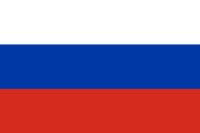
BASF Celebrates Expansion and 10th Anniversary of DMAPA and PEA Production in Nanjing, China
Hz info2025-10-16 18:15
BASF today celebrated the expansion and 10th anniversary of its 3-(dimethylamino)propylamine (DMAPA) and polyetheramine (PEA) production at BASF’s Nanjing site. With the startup of the expanded plants in July 2025, the site’s annual DMAPA production capacity has nearly doubled, while PEA capacity has increased by approximately 25%.
Michael Becker, Senior Vice President, Intermediates Asia Pacific, BASF, said, “Over the past decade, close collaboration with our customers has been key to our success. This expansion further strengthens our responsiveness and ability to deliver reliable supply and high-quality products, laying a solid foundation to meet our customers’ growing demand across Asia Pacific.”
BASF celebrates the expansion of DMAPA and PEA plants at BASF Nanjing site.
Officiating guests (from left):
Stijn Brughmans, Vice President, Operations and Technology, Intermediates Asia Pacific, BASF
Joachim Schmidt-Leithoff, Vice President of Business Management Amines, Acetylenics and Carbonyl Derivatives, Intermediates Asia Pacific, BASF
Tao Lei, Deputy Director of the Administrative Committee of Nanjing Jiangbei New Area
Michael Becker, Senior Vice President, Intermediates Asia Pacific, BASF
Chen Qingguo, Director, Administration Office of Nanjing Jiangbei New Material Science Park
Mingwei Qin, General Manager of BASF Specialty Chemicals (Nanjing) Co. Ltd
Customers benefit from carbon emission reduction as entire amine portfolio produced at BASF Nanjing site switched to 100% renewable electricity
Since 2023, BASF has transitioned its entire amine portfolio produced at BASF’s Nanjing site to 100% renewable electricity. In addition to DMAPA and PEA, this also applies to tert-Butylamine (tBA), n-octylamine (NOA), and 1,2-propylendiamine (1,2-PDA). This change has reduced annual CO2 emissions by approximately 9,800 tons compared with the baseline year 2020, corresponding to an average product carbon footprint (PCF) reduction of about 4% across the entire amine portfolio at BASF’s Nanjing site. Customers benefit from this transition as it reduces their Scope 3 emissions without requiring any changes on their end.
“As one of the world’s largest amines producers, BASF is taking a step towards sustainability by converting to 100% renewable electricity for the amines produced at BASF’s Nanjing site1. This move enhances competitiveness for both BASF and our customers in the region by reducing carbon emissions, positioning us closer to becoming their preferred partner for sustainable intermediates,” added Joachim Schmidt-Leithoff, Vice President of Business Management Amines, Acetylenics and Carbonyl Derivatives, Intermediates Asia Pacific, BASF.
Versatile amines support the sustainability transformation of various industries in Asia Pacific
DMAPA is an important building block for betaines, which are used to produce gentle liquid soaps, shampoos and dishwashing detergents. DMAPA is also used in water treatment as well as in the production of plant protection products, lubricant additives, polyurethane foams and epoxy resin hardeners. Following the expansion, BASF has increased its global production capacity of DMAPA by more than 20% to about 85,000 metric tons per year, reinforcing its position as one of the world's leading manufacturers of DMAPA.
PEA is an intermediate chemical for epoxy curing agents used in the production of plastics, polyurea coatings, adhesives, reaction injection moulding and wind blade composites. BASF offers PEA under its Baxxodur® brand.
Customers join the celebration and visit the expanded plants at BASF Nanjing site.
1.Reduction includes Scope 1, 2 and 3.1 emissions and was conducted in comparison with the base year 2020, which marks the beginning of BASF’s PCF calculations and the gradual electrification of sites. Calculation is based on equivalent production volumes as in 2020. BASF’s PCF calculations follow the requirements and guidance given by ISO 14067:2018. In a methodology review, TüV Rheinland has certified that the PCF methodology SCOTT developed and used by BASF SE for calculating the PCFs of BASF products is scientifically-based, is in accordance with ISO 14067:2018 and the Together for Sustainability PCF Guideline, and reflects the state of the art (ID-Nr. 0000080389: BASF SE-Certipedia).
MORE HZinfo
- BASF and LEMON sign Memorandum of Understanding to co-develop new material solutions for apparel
- The agreement also outlines future opportunities for collaboration in technology development and business expansion.
-
2025-10-16
- BASF Celebrates Expansion and 10th Anniversary of DMAPA and PEA Production in Nanjing, China
- ?With the expansion, BASF Nanjing site’s DMAPA annual capacity nearly doubled, while PEA capacity increased by around 25%.
-
2025-10-16
- Recommended products:JinZong Machinery Multifunctional Dispersing Reactor
- The multifunctional dispersing reactor integrates both low-speed powerful stirring and high-speed dispersion functions, offering excellent adaptability for medium- to high-viscosity and thixotropic ma
-
2025-10-16


 English
English 简体中文
简体中文 Русский
Русский إنجليزي
إنجليزي

